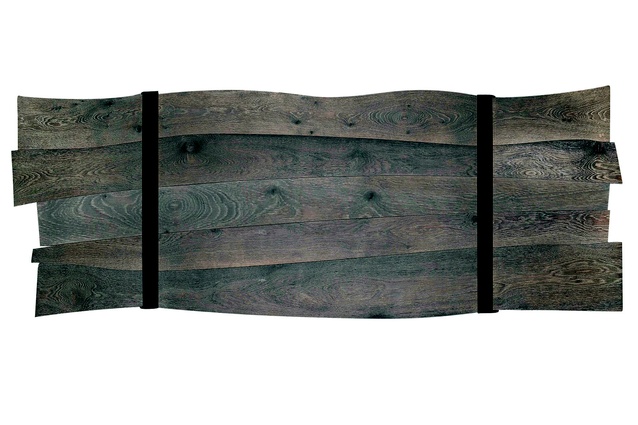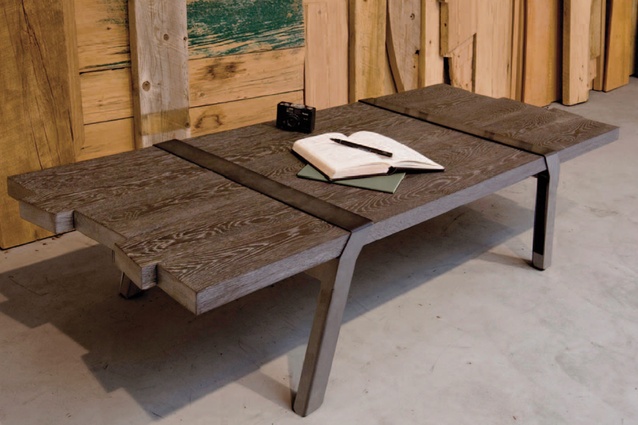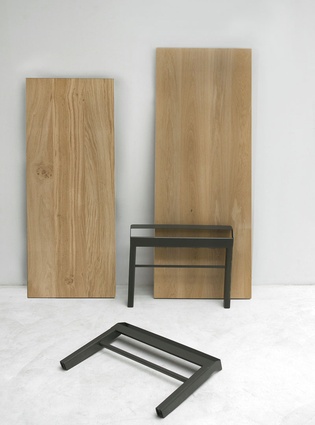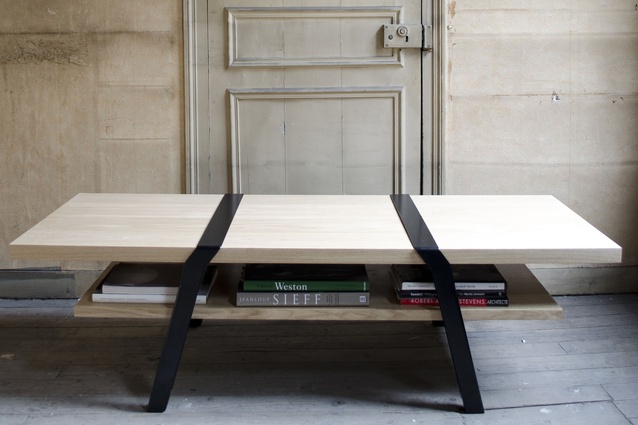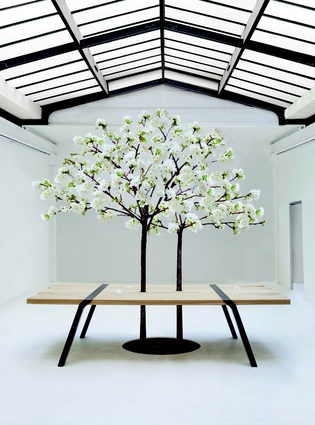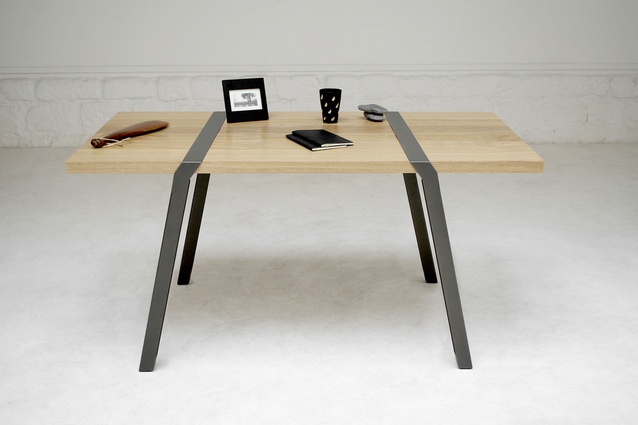Roderick Fry
The life of ‘Pi’ and other things: Interior Magazine talks to Roderick Fry about the stripping back of his Système Pi, and gets some notes on what it’s like working out of the Paris-based workshop, showroom and studio Moaroom.
Interior: Roderick, you’re based in Paris. How long have you lived there and why did you settle there?
Roderico Fry: Over 13 years now. The easy answer for ‘why I initially came here?’ is – ‘a girl’. I met my wife in China and, when I needed a change from my life there, the move to France was the most obvious because I didn’t want to be married to someone who was always obliged to speak my language. ‘Why we’ve stayed in France since?’ It’s partly to do with the success of Moa and, more widely, an ease I have with the French lifestyle and, importantly, its values.
Interior: What is your background in New Zealand? Did you study design or business here or offshore?
RF: I was a marketing student in Auckland with a girlfriend doing art and design at Elam. I was way more interested in her work, teachers and fellow students than my own. I moved to Taiwan in 1994 to work in marketing but by 1996 I had started working working for an amazing French designer of perfume bottles called Joel Desgrippes. I only became a designer – proper – in 2009, after 13 years of working ‘with designers’.
Interior: How long has Moaroom been going now?
RF: The idea hatched nine years. In 2004, I had my first meetings with David Trubridge, Simon James, Angela Roper and a lot of other people in the field of New Zealand design to see what could be done.
Interior: Tell me a little bit about the scope of your operation. You represent a great stable of New Zealand designers, such as David Trubridge, Resident and Phil Cuttance, but as a company do you have any other strings to your bow?
RF: We purposely have no other strings to our bow. We live off selling the work of these New Zealand-only designers alongside the pieces I design.
Interior: In a sense, with Moaroom, you fly a flag for New Zealand design in France. Have you found it difficult to gain acceptance in a country with its own strong design traditions, and one that is also in close proximity to the offerings of the rest of Europe?
RF: In 2004, I read somewhere that the term ‘Skandinavian Design’ was first used to describe a group showing of work by Arne Jakobson and his compatriots in Paris in the ’30s. In fashion and in design, Paris is one of the key places on the planet where creators come together and then reverbrate back out to the rest of the world. The critics and clients are so well educated and confident in their own taste that they are open to ‘liking’ something even though nobody else has said they like it yet. They are on the look-out for ideals: ‘what values are behind these new ideas?’ and ‘are they clever?’ and ‘will these values mark the future of design in general?’ Almost immediately, in response to our first press release, we had a request from one of France’s most influential journalists to fly down to New Zealand to meet the key players.
Interior: You represent Jakob and McFarlane, a NZ/Swiss architecture practice that does some wonderful work. How did that relationship come about?
RF: In 2006 we published the The Long White Book, which regrouped a selection we’d made of New Zealand design, architecture and art to allow the French journalists and critics to be able to contextualise the work we were presenting beyond any narrow stereotypes they might have around big rugby players, sheep and uninhabited beaches. Many of New Zealand’s top architects contributed images and even a bit of cash to the project and I asked Brendan MacFarlane to write the introduction. Then we became friends, and finally collaborators on the ‘Float’ project. I am a massive fan of their work and think that George [at the Centre Georges Pompidou] is the greatest restaurant project ever conceived.
Interior: Lets talk a little about Système Pi – I like that it has an appearance of effortless simplicity; it’s self-supporting, the legs, simply, are the struts and bracing. Where did the idea come from?
RF: It started with a very noble goal – to make a flat-pack table that was also stable. I drew a few different options of how I thought this could be achieved and every so often I invited a retired bridge architect who lives in our area to critique my ideas over a few coffees. He was great at getting me to take out my eraser and get rid of element after element that wasn’t necessary. By the end of that process I had stumbled into virgin territory and the rest seemed natural. We only took three steps of prototyping to get to a model with the level of stability we were satisfied with. It takes a minute to assemble but you can dance on it.
Interior: I see you were at Maison & Objet in Paris 2013. Did you exhibit? Do you represent at many of the major design exhibits in Europe?
RF: We’ve had about ten New Zealand design stands ourselves at Maison et Objets since 2006, and this year I worked on both David Trubridge’s and Resident’s stands in Milan. The design shows pay big dividends if you are either very big and very established, or very small and breaking through for the first time. We are in between and we’ve established around 100 key client relationships which we prefer to manage through good photography of our new items, visits and generally staying in touch and making sure that orders are handled smoothly.
Interior: In the pantheon of greats designers (or architects or artists) is there anyone you find particularly inspirational? And, on a more personal level, have you had any mentors, aside from the bridge designer, who have helped you along in a business or design sense?
RF: I have about five possible answers: I like the designers who forced us to re-think our lifestyles as society changed: Le Corbusier, Charlotte Perriand and Jean Prouvé had an extremely difficult task convincing people that art nouveau, et cetera, was not the future if we wanted ‘all men to be created equal’. They did this by making bent steel and plywood beautiful and functional.
Regarding contemporary aesthetics, I’m the world’s biggest fan of New Zealand’s leading architects, even when I see everything from the perspective of Paris. Stevens Lawson, Ken Crosson and Jakob + MacFarlane are world class.
Extremis and E15 are two small European firms doing interesting work that is fun, easy to live with and long lasting.
Taking ‘New Zealand design’ international is unknown territory. We are all learning as we go. People who’ve tried more classic brand development models have failed and, at the moment, the success has come about thanks to good partnerships between ourselves, David Trubridge’s team, and notably his business and production managers Josh and Matt who’ve built an incredibly reactive supply model, and Resident. Resident are doing what we would love to do – developing new work from New Zealand designers – but as we can’t be in two places at once, they develop and we sell.
At 44, I have to believe that I’m more following “myself’’ than anyone else; that I’m the best person in the world at being me.
I don’t like how in New Zealand we have venerated a lot of business leaders whose models have been based on getting the most cash out of selling shares and not good products.
In terms of motivation, I’m more stimulated by watching my best friend’s wife Johanna Johnson take on the world of high-end fashion and dress movies stars at the Oscars on limited resources, than I am in trying to achieve something that someone else might have done before.


